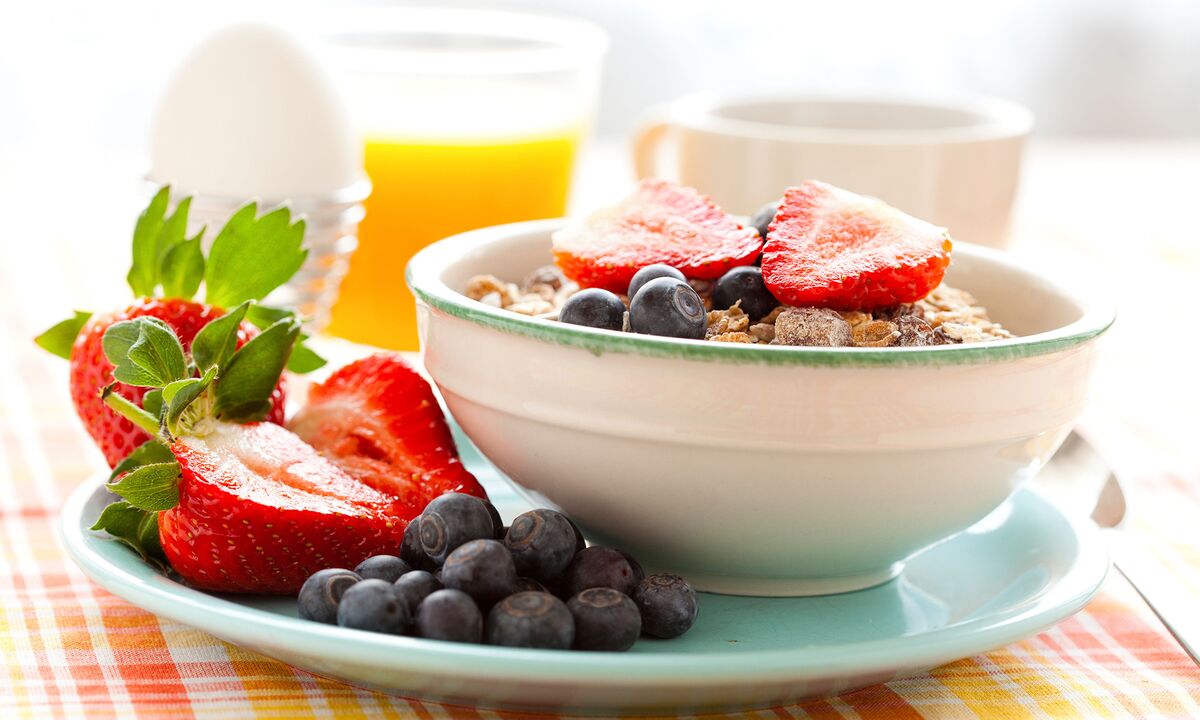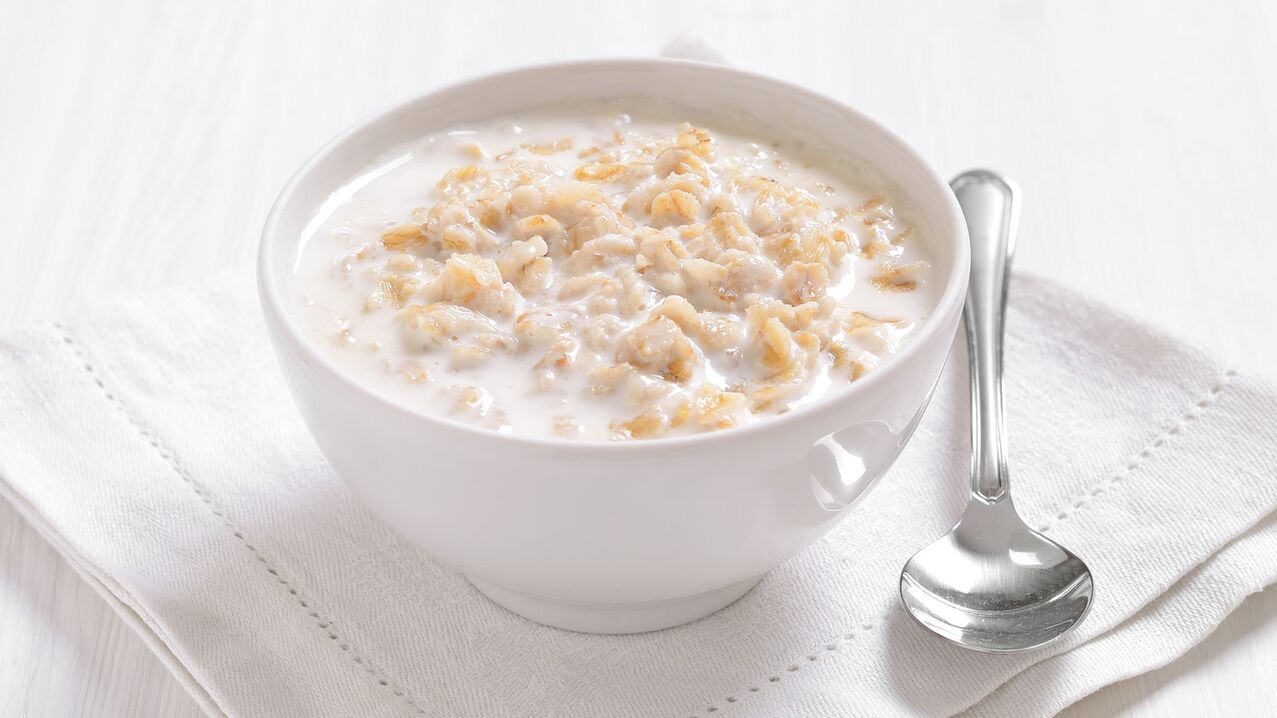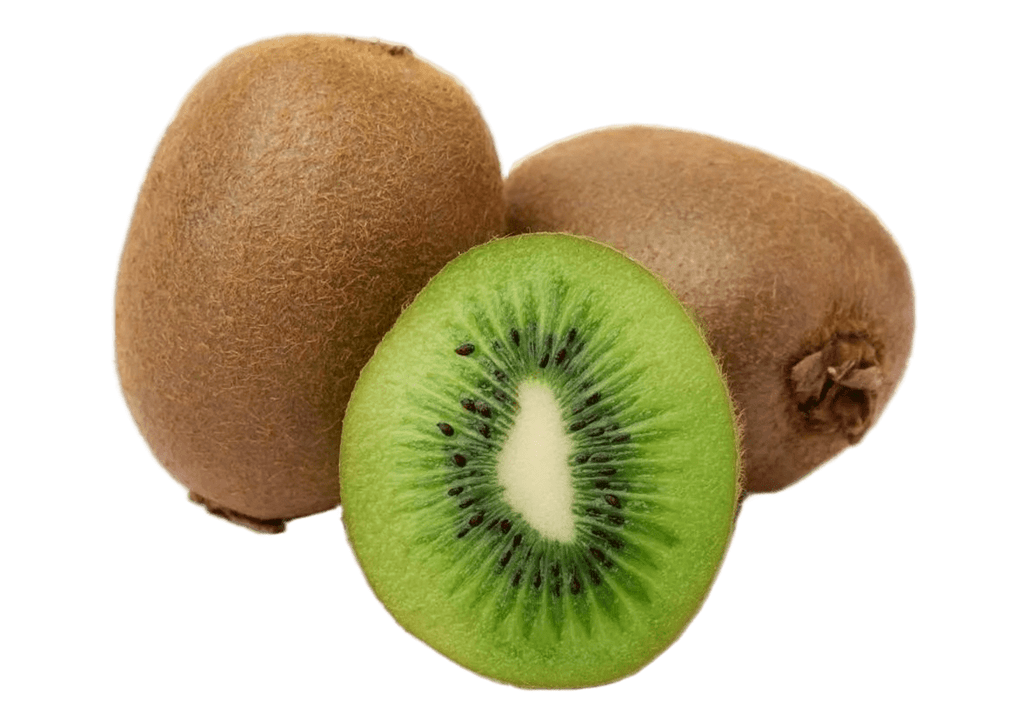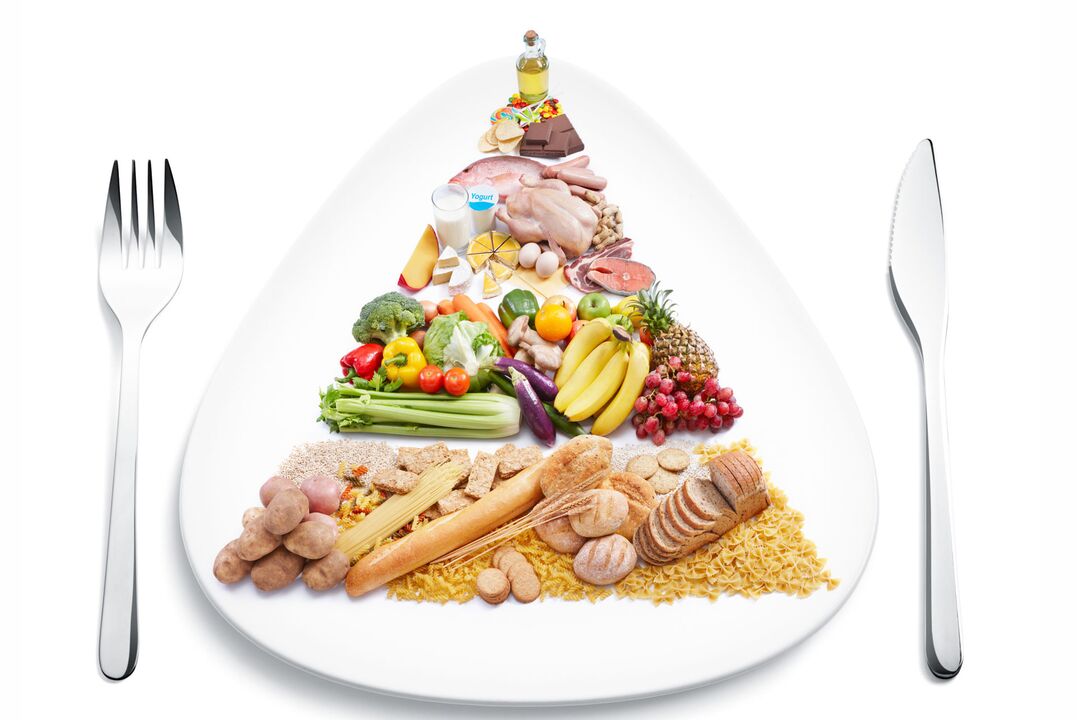
- basic diet. The diet contains sufficient energy to maintain the patient's vital functions and has a beneficial effect on the stomach wall;
- low calorie diet. If the condition worsens (acute digestive disorders, constipation, diarrhea), a diet with reduced energy value may be introduced for several consecutive days.
- Eliminate spicy foods (over 600C) and cold (below 150C) Dishes;
- Choose the optimal temperature for meal foods (20-500and);
- Use dietary rules: small, frequent meals (up to 5-6 times a day) and regularity (at the same time);
- For high-acid gastritis, eliminate foods from the diet that stimulate the production of hydrochloric acid and irritate the stomach lining;
- For low-acid and acidic gastritis, give priority to foods that speed up digestion;
- If a person suffers from two diseases at the same time, such as gastritis and diabetes, then foods harmful to diabetes should also be eliminated from the diet.
What can I eat if I have gastritis due to hyperacidity?

- First course (vegetable and cereal soup, noodle soup in water or milk);
- Main dishes (meat, fish, cut into pieces, steamed, boiled or grilled, sometimes lightly pan-fried, without skin);
- side dishes (boiled vegetables, pasta, soft cereal);
- Salads, snacks (boiled vegetable salads, lean meats, fish, dairy sausages, cheese and other snacks);
- 2. 5% pasteurized milk, some fermented dairy products (cream, yogurt, cheese);
- sweet varieties of fruits and berries;
- Beverages (tea, dried fruit preserves, jellies, juices of certain fruits, decoctions);
- Bakery products (dry wheat bread, dry biscuits);
- Fats (vegetable oils, butter).
- beef.It is recommended to use type 1 meats with limited fat content. The energy value of this product per 100 grams is approximately 218 calories, and the ratio of protein to fat is 1: 1. Beef contains large amounts of macro and trace elements, especially phosphorus, sulfur, iron, zinc, copper, chromium, cobalt and molybdenum, as well as high levels of B vitamins. Shredded steam steaks, portioned boils, stews, roasts made from beef;
- mutton.It is allowed to eat lean meat, the energy value per 100 grams is about 209 calories, and the ratio of protein to fat is 1: 1. The product contains large amounts of macroelements potassium, sulfur, and phosphorus, and trace elements copper and fluorine. Lamb is rarely used in medical institutions due to its special taste and smell, but it is quite possible to cook it at home;
- rabbitThe energy value of 100 grams is approximately 183 kcal. The ratio of protein to fat is 2: 1. Meat contains enough macro and trace elements and vitamins. Lean rabbit meat is considered one of the best meat products for treating high-acid gastritis. Boil, stew, and bake slices ready;
- chicken.The energy value of 100 grams is 90-180 kcal, depending on the part of the carcass. The ratio of protein to fat is roughly the same as rabbit meat. The most valuable white meat is skinless chicken breast. Prepare boiled and baked slices;
- sausage.Eat as a snack. It is recommended to consume up to 50 grams per day of lean varieties of boiled milk and doctor sausage. Sausage can be replaced with offal snacks and pate;
- Beef tongue.The energy value per 100 grams is approximately 173 kcal, which is the first type of delicious by-product. It is nutritious and nutritious. Boil and eat as a hot meal;
- sausage.The use of this product is not regulated by the official diet for gastritis. Since low-fat varieties of milk sausage are available, it should be assumed that people with high-acidity gastritis can also consume milk sausage. It is not recommended to choose smoked or fried sausages, sausages with high pork fat content, and bacon;
- sea fish.Low-fat varieties are recommended. Usually the fat content of fish is as high as 15-20%. Fish with low fat content are marine species (cod, tuna). Its fat content is 0. 4% to 0. 8%, and its protein content is 17. 6% (cod) to 22. 8% (tuna). The energy value of this fish ranges from 148 kcal per 100 g of cod to 297 kcal per 100 g of tuna. Fish contains healthy unsaturated fats (omega-3, omega-6). Low-fat herring soaked in water (milk) is allowed as a snack. For hyperacidity, consume small amounts of sturgeon caviar;
- River fish.Pike and pike are low in fat. Consumption of river fish in medical institutions is limited because river fish contains a large number of small bones. What I prepare at home is boiled fish fillets and steamed fish fillets;
- milk.Pasteurized milk with a fat content of 2. 5% is usually used. Whole milk (direct from cows) is prohibited from the diet. 2. The energy value of 5% milk is 54 calories per 100 ml. Pasteurized milk is ready for consumption without additional heat treatment. You can use it to prepare hot meals: soups, porridge, purees, omelettes. Individuals may have intolerances to milk ingredients;
- creamThis is milk separated to 10% (regular cream) or up to 35% (heavy cream). Avoid using heavy cream in your diet, but add regular cream in small amounts to main dishes, sauces and puddings;
- hard cheeseParmesan, Gouda, Kostroma, Cheddar, etc. The energy value of the product is approximately 355 kcal per 100 grams. Use as a snack. For high acidity gastritis, it is recommended to use hard cheese with a limited fat content (30-50%) and without spicy additives. You can eat more than 20-50 grams of cheese every day;
- soft cheeseMascarpone et al. The caloric content of Mascarpone Cheese per 100 g of the product is 450 calories. For dietary nutrition, you want to choose mild, unsalted varieties of cheese. An appropriate amount of cheese can significantly adjust the balance of animal-derived protein and fat as well as trace elements in the daily diet of patients with gastritis;
- cottage cheese.Non-acidic varieties are recommended.Fat content ranges from 0% (low-fat cheese) to 30% (high-fat cheese). The energy and nutritional value of this product is very high. Cottage cheese can be used as curd, cheesecake, fried without crust;
- yogurt. The standard fat content is 3. 2%. This product is low in calories, with only 65 calories per 100 grams. The yogurt contains sufficient sugar and low acid content. The main varieties of yogurt are suitable for dietary nutrition for gastritis;
- egg.The energy value of the product is 157 kcal per 100 grams. The ratio of protein to fat is about 1: 1. For gastritis, use fresh eggs (obtained from chickens) that were laid no later than 7 days ago. Soft-boiled eggs and omelettes with milk or cream are recommended. Due to poor digestibility of raw protein, raw eggs are prohibited in dietary foods;
- porridge.The caloric content of porridge exceeds the energy value of meat products. However, plant carbohydrates provide energy quickly. Porridge should not be considered the main component of dietary nutrition for gastritis. Popular cereals for preparing porridge, soups, puddings and other dishes: semolina, rice, buckwheat and oatmeal.
- Whole grainsThe energy value is 335 kcal per 100 grams. The main source of energy comes from carbohydrates. Although semolina contains significant amounts of macro, microelements and vitamins, it is used cautiously in the dietary nutrition of children under 3 years of age and in the elderly over 70 years of age. Higher levels of individual intolerance to the product are observed in these age groups;
- rice cerealThe energy value is 323 kcal per 100 grams. A 100-gram serving provides approximately 20% of a person's daily energy needs. Rice contains many useful substances. It contains ingredients that soothe stomach lining irritation and has antioxidant properties;
- buckwheatThe energy value is 335 kcal per 100 grams. Valuable dietary products. Regulates blood cholesterol levels, normalizes metabolic processes and promotes weight loss;
- oatmealThe energy value is 342 kcal per 100 grams. Oatmeal is allowed. Porridge made from oatmeal (flakes) has a high energy value and contains the greatest range of macro and trace elements as well as B vitamins. The mucous substance in oatmeal reduces irritation to the stomach lining.
- spaghettiand fans. The energy value is 320-350 kcal per 100 grams. For high-acidity gastritis, pasta made from high-quality durum wheat is recommended. The protein content in pasta and egg whites can reduce the negative effects of wheat, an undesirable grain product that treats gastritis. It is added during factory production. pasta and vermicelli as part of the first and second courses;
- bread.For gastritis, use good quality wheat bread. It doesn't have to be fresh. Bread is best baked 1-2 days ago. Cookies and dry biscuits are available in limited quantities. You can diversify your menu and include baked pies with meat, fish, apples and berries, which can treat hyperacidity, up to twice a week;
- PotatoThe energy value is 77 kcal per 100 grams. This product contains large amounts of water, carbohydrates, potassium, iron, zinc, vitamin PP (niacin). It is recommended to boil or puree it. It is forbidden to include fried potatoes in the diet. In this form, it is difficult to digest, irritates the stomach lining and stimulates the fermentation process;
- carrotThe energy value is 33 calories per 100 grams, and it contains a large amount of carbohydrates, beta-carotene (provitamin A), B vitamins, and pectin. Pectin is a substance that cleanses the body and reduces levels of harmful substances. Carrots contain large amounts of potassium and other trace elements;
- beetThe energy value is 43 kcal per 100 grams, and it contains a large amount of carbohydrates, macro and trace elements, and vitamins. Boil and eat. Beetroot prevents the growth of pathogenic flora in the stomach and intestines and also enhances intestinal motility;
- cabbage. Nutritionist recommendations for its use in treating gastritis are unclear. Cabbage is certainly healthy, but it can cause bloating. White cabbage and Brussels sprouts can increase gastric juice secretion. These varieties are not recommended for high-acid gastritis, but are used for gastritis with low hydrochloric acid content;
- cauliflowerThe energy value is 30 kcal per 100 grams, and it contains a large amount of carbohydrates, potassium and sugars, vitamin C, and trace elements. For gastritis with hyperacidity, stewing and steaming are highly recommended as it does not stimulate the production of hydrochloric acid;
- zucchiniThe energy value is 24 kcal per 100 grams. High in carbohydrates and sugar, low in fiber. Zucchini is rich in vitamin C (ascorbic acid) B9(folic acid), A (retinol). Zucchini has a delicate pulp and is definitely recommended for dietary nutrition in gastritis;
- pumpkinThe energy value is 22 kcal per 100 grams. The product is balanced in protein, fat and carbohydrates and rich in vitamins A and B9(folic acid), C (ascorbic acid). Among the macro and trace elements, potassium and copper are present in high amounts. For gastritis with hyperacidity, it is recommended to add pumpkin in the form of pumpkin porridge; pumpkin juice is also very useful. This vegetable has beneficial properties against pathologies of the gastrointestinal tract; the seeds have anthelmintic properties and produce a laxative effect. It is recommended to eat the fruits of zucchini and pumpkin in the early stages of ripeness. It is not recommended to use overripe fruit;
- tomatoThe energy value is 20 kcal per 100 grams. Only use ripe fruits that are high in sugar. This product is rich in potassium, chloride, sodium, vitamins A and C. For hyperacidity, tomatoes can be eaten in soups and sauces. It is recommended to remove the peel first;
- Fresh green dill.Use fresh dill as a condiment, which is useful for highly acidic gastritis. This product is rich in vitamins; in addition, the substances contained in dill can prevent food from fermenting in the stomach and relieve cramps;
- apple.Only sweet varieties are recommended. The energy value of this product is 47 calories per 100 grams. Apples contain a large amount of macroelements, trace elements and vitamins. The apple diet, made with green apples, is a myth. All of the apple's biochemical components considered essential, including pectin, are present in other fruits and vegetables. Before eating an apple, remove the skin as it can irritate the stomach wall. Baked apples for gastritis can be consumed without restriction;


What should you not eat if you have high acid gastritis?

- Stimulates gastric juice production;
- Strongly affects the stomach wall;
- Enhance the fermentation process;
- Poor digestion in the stomach.
- kiwi.This sweet and sour exotic fruit has a pleasant taste and contains a variety of vitamins, sugars and organic acids, as well as substances that stimulate tissue regeneration and have a local calming effect. At the same time, if you suffer from hyperacidity, especially in the acute stage, you should avoid eating kiwi fruit. The reason for the ban is that acid may have a negative impact on the inflamed stomach lining;
- orange.All citrus fruits (lemons, limes, grapefruits, oranges) stimulate the taste buds and indirectly lead to the production of hydrochloric acid. There are numerous scientific observations confirming that a person produces saliva even just by looking at a lemon. Therefore, it is strictly forbidden to eat any citrus fruits when you have highly acidic gastritis;
- garlic.This plant is known for its phytoncides, which prevent colds and are natural antibiotics. However, when consumed orally, garlic stimulates appetite, causing the active production of gastric juices.
- chocolate. Despite its richness in useful substances, its use in the treatment of gastritis is prohibited. The ban is linked to the high caffeine content in chocolate (around 40%). Caffeine is known for its aggressive effects on the gastric sphincter and its ability to cause reflux. Caffeine can also irritate the stomach lining. All these properties of caffeine and chocolate are not good for gastritis.
- ice cream. A delicious dairy product, but containing thickeners, spices, preservatives, flavorings and colorings. This cold, sweet delicacy can have a negative impact on the stomach lining.
- nutGastritis should not be consumed in large amounts (more than 30 grams per day);
- cashew.This product contains a corrosive oily substance from which natural ink is made, so cashews may aggravate gastritis;
- almondOther stone fruits and berries (apricots, plums, cherries) contain small amounts of hydrocyanic acid, which can have adverse effects on inflamed stomach lining;
- Hazelnut (Hazelnut) is a nutritious product with a protein value close to that of meat. However, hazelnuts contain small amounts of aggressive acids that can negatively affect the intestines. In the stomach of a healthy person, their effect is imperceptible, but in the case of inflamed mucosa, hazelnuts can enhance the pathogenesis.
- cereals(Millet, corn, barley, beans). Porridge made from these crops contains crude fiber, which increases the acidity of gastric juices and stimulates the fermentation process;
- peanut.This is not a nut, but the fruit of a leguminous plant. Like all legumes, peanuts cause fermentation in the stomach, which can irritate the stomach lining;
- Grape.Contains a lot of useful substances, but also a lot of sugar. Grapes also have thick skins, the composition of which stimulates the fermentation process.
- meatyproduct, indigestion in the stomach, has a common feature, which is high cholesterol and animal fat;
- lean porkAlthough it is included in the list of dietary nutritionally acceptable foods, it is not used in medical settings. Therefore, we list this type of meat as meat that is prohibited for gastritis;
- Duck, goose and bacon products.The excess fat contained in these meats and delicacies inhibits the production of hydrochloric acid, thereby slowing down digestion. Fatty foods do not stay in the intestines and are quickly excreted, often causing diarrhea;
- Salo.The main energy value of this product is represented by animal fat. Lard contains a lot of salt and spices. Like fatty meat, lard inhibits the production of hydrochloric acid, irritating the stomach lining and causing diarrhea;
- Canned meat and fish.Contains flavoring additives, large amounts of fat, and other ingredients that are difficult to digest in a diseased gastrointestinal tract;
- Dumplings. They are difficult to digest and contain two opposite ingredients: cooked dough and minced meat. In the case of excessive stomach acid, eating dumplings will be accompanied by heartburn and a heavy feeling in the stomach;
- liver. This product contains a large amount of cholesterol (more than 270 mg per serving), in addition, the liver is the biological filter of the body, which accumulates and processes harmful substances that enter the blood of an animal or bird. Despite its high content of vitamin A and other fat-soluble vitamins, liver is not recommended for treating inflammatory processes in the stomach wall.
low acid gastritis diet

- Prepare dishes with rich broths and fish stocks;
- Eat sweet and sour fruits and berries, including citrus fruits;
- Eat pickled cucumbers and tomatoes in moderation;
- Drink fermented milk drinks (kumis, kefir, fermented roasted milk) instead of milk;
- drink sour fruit juices;
- Drink gas-free mineral water.
Diet when gastritis worsens
- To a cereal slime puree add water and gradually add milk;
- Chopped lean meats (chicken, rabbit, tender veal, boneless fish) are made into soufflés and steamed steaks;
- Soft-boiled eggs, fried eggs;
- watery porridge made from crushed buckwheat, oatmeal and rice;
- Berry jelly drinks, unsweetened light brewed tea.

































